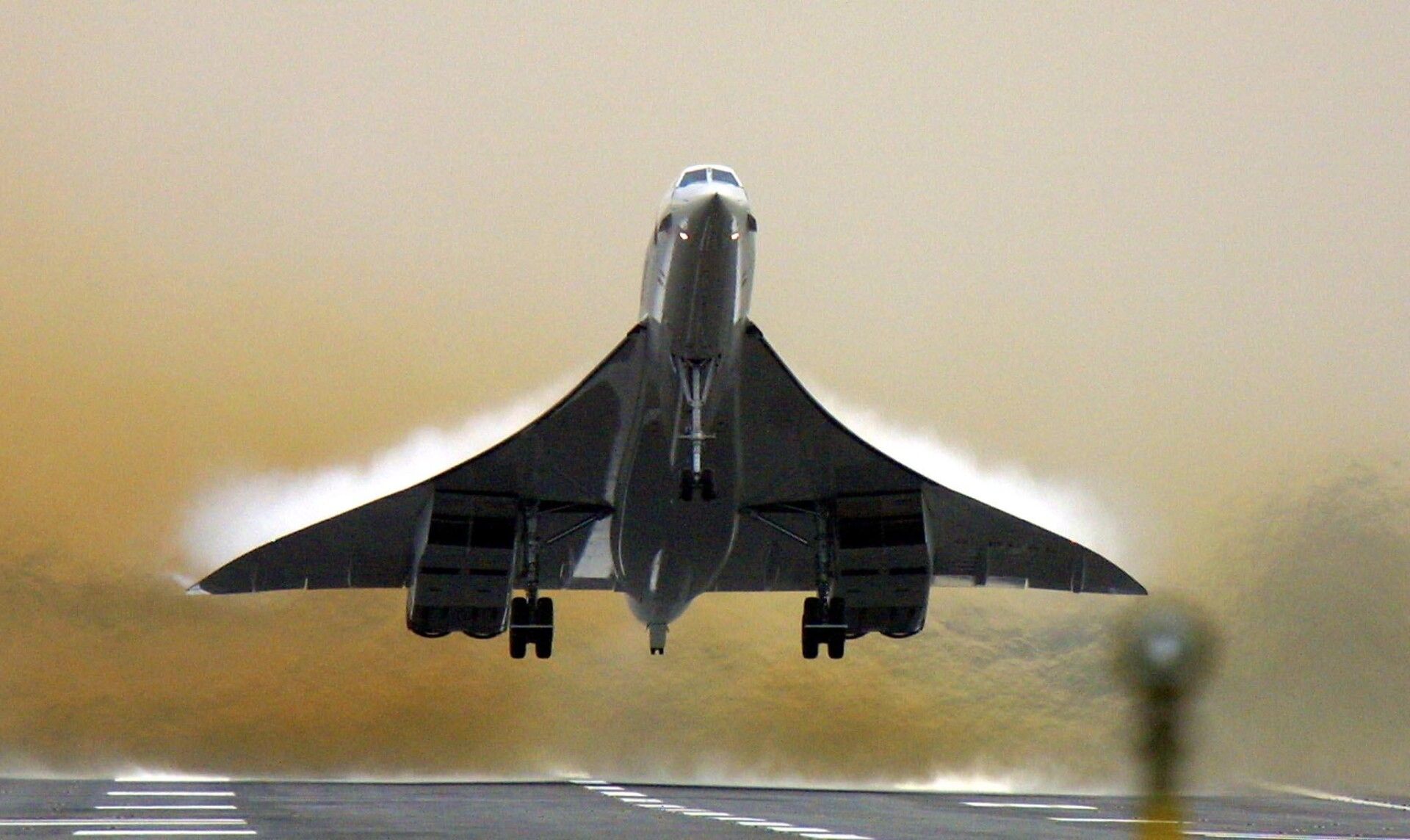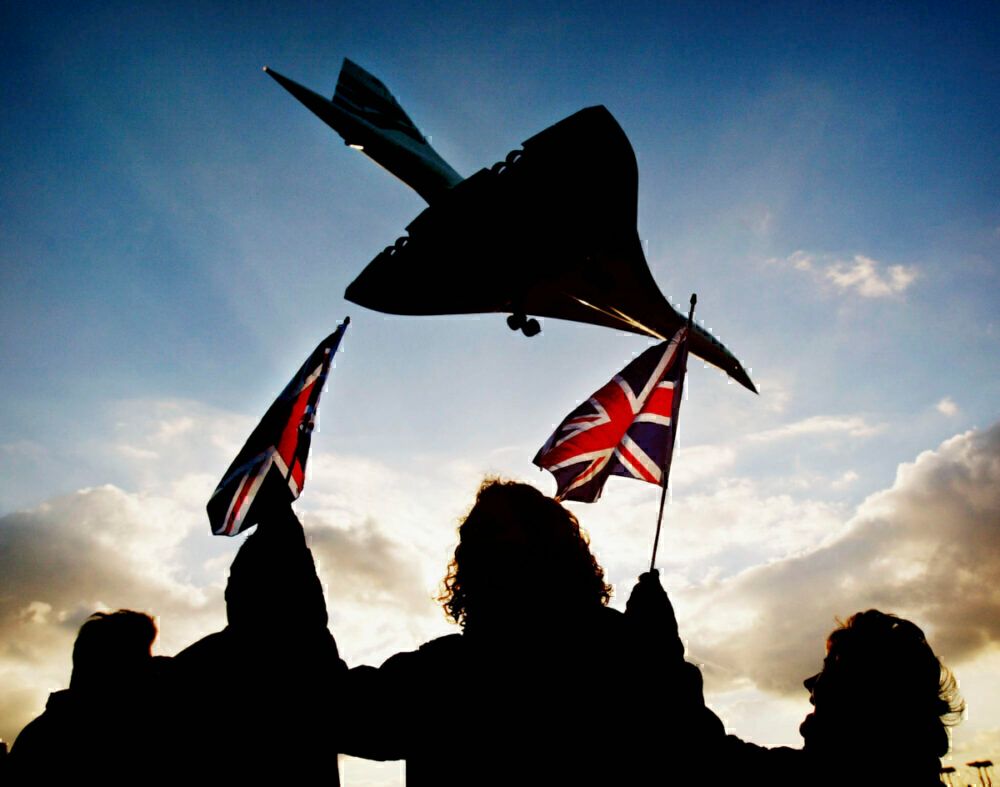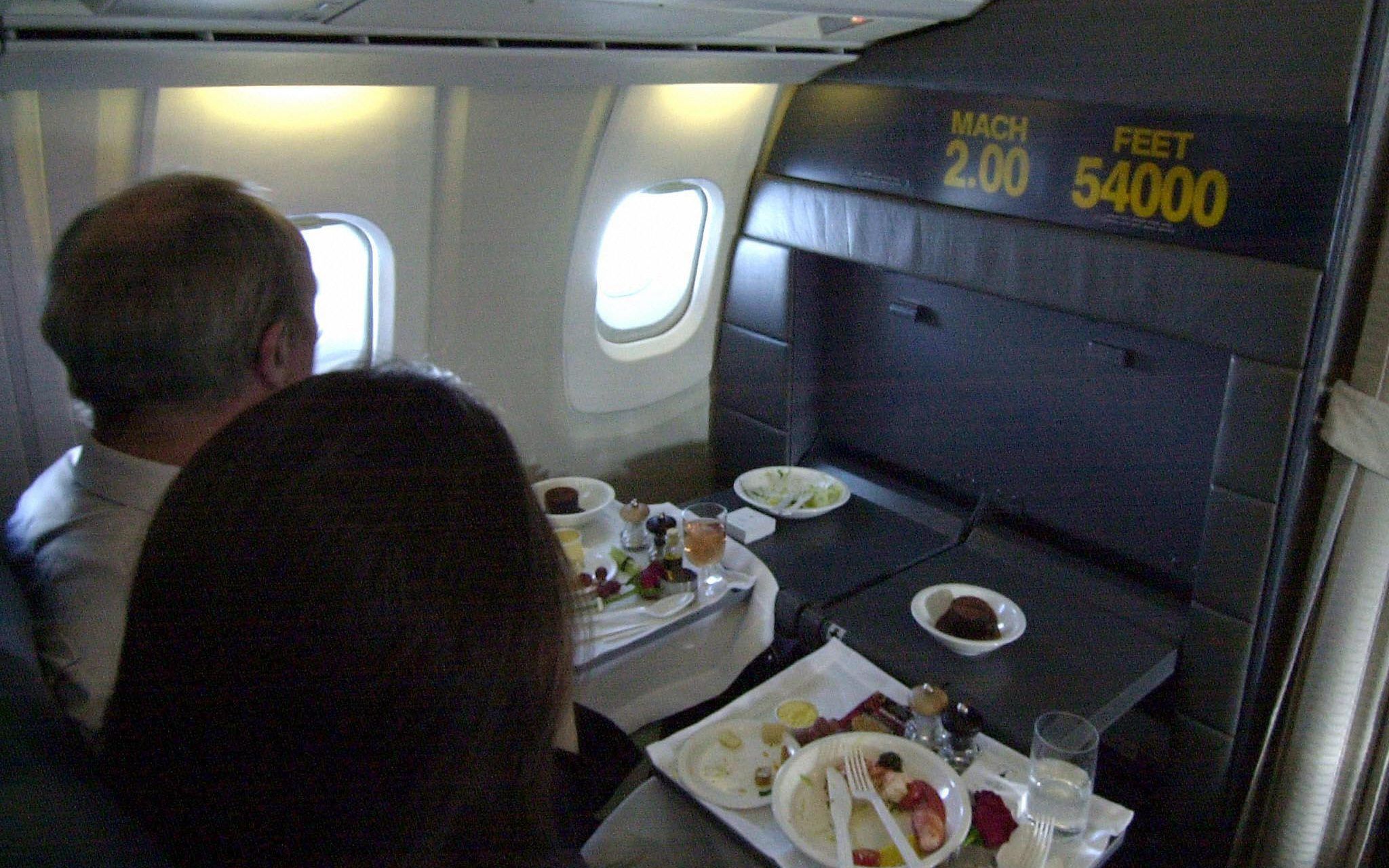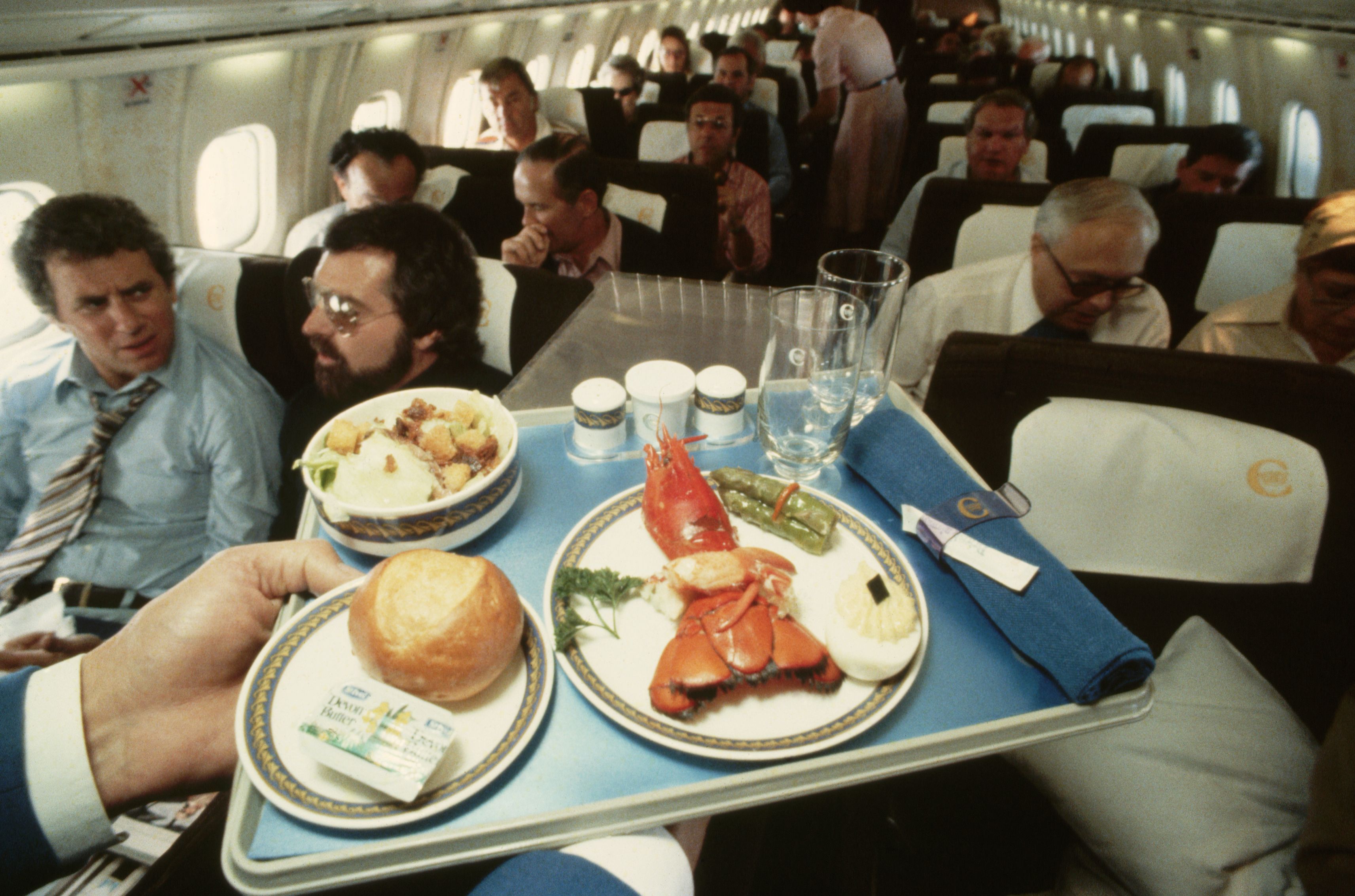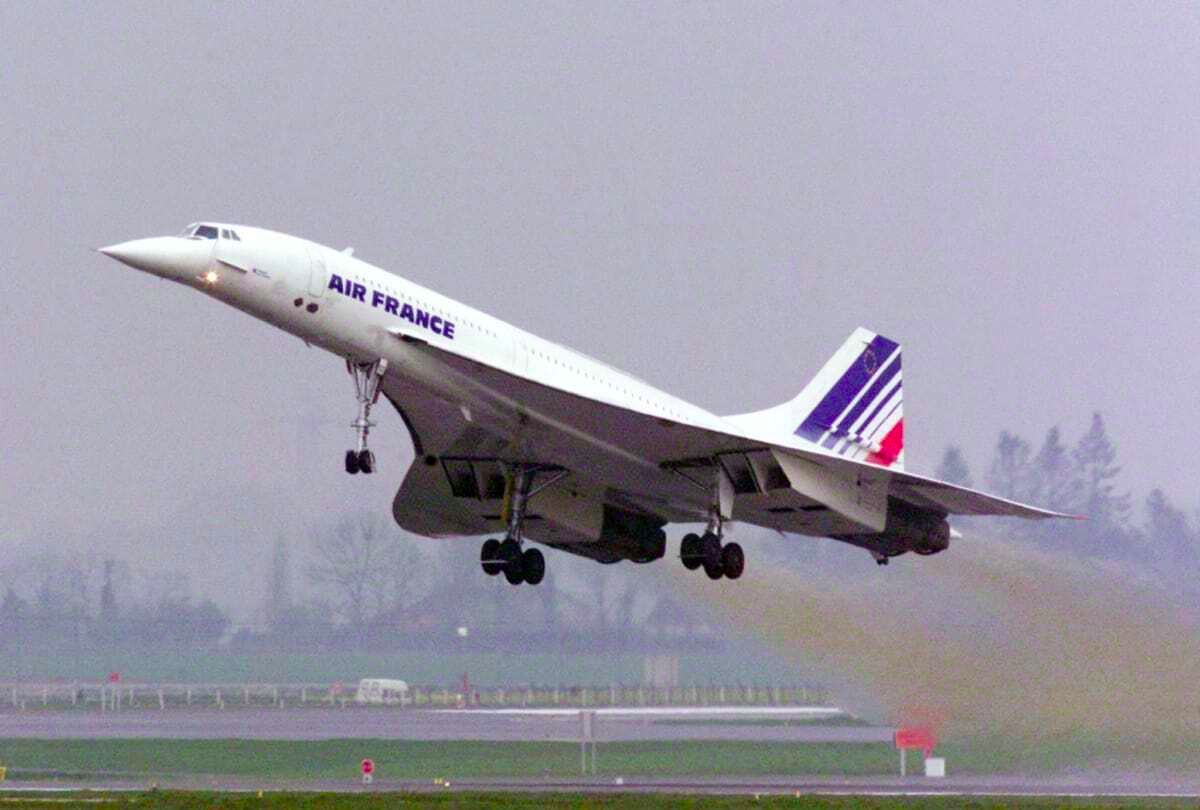Flying five miles higher than a Boeing 747 at twice the speed of sound, the Anglo/French Concorde was billed as being the future of aviation when it made its maiden flight on March 2, 1969. Able to carry 100 passengers at supersonic speeds, the Concorde could fly between London and New York in less than three hours.
Despite its edge-cutting technology and fantastic speed, the Concorde was expensive to operate, which meant that only the wealthy could afford tickets. Unlike the first class cabins on today's jets with their enclosed compartments and lie-flat seats, Concorde was fitted with four abreast bucket-like seats. Passengers flying Concorde were also severely limited to how much luggage they could travel with and were only allowed a small carry-on and one piece of checked baggage not weighing more than 51 pounds.
British Airways and Air France wanted to create a fine dining experience
To make up for the luggage restriction and lack of cabin space, Air France and British Airways went all out to create a fine dining experience equal to anything you could get at the best restaurants in London and Paris. Not only was the food luxurious and decadent, it was also accompanied by the finest French wines and vintage Champagne.
Responsible for many of Concorde's menus was triple Michelin-starred chef Michel Roux, who, together with his brother Albert, revolutionized gourmet French cuisine in England.
The meal served depended upon the departure time
On a typical transatlantic Concorde flight, passengers would be served breakfast, lunch, or dinner, depending on the departure time. All meals were served on Damask table linen on fine Wedgwood and Royal Doulton china to set a standard unrivaled by any other airline's meal offerings.
Preceding the meal would be Champagne and delicate canapés. A typical lunch on Concorde would be melon, fresh seasonal fruit, or a plate of the finest Scottish smoked salmon. The main course would be a prime-grilled fillet of Angus beef or a delicious lobster dish. People with special dietary requirements like vegetarians and those who only ate Kosher or Halal were also catered for.
While leaving out the wine and Champagne lists because they are so varied and excessive, below is a typical Concorde Brunch menu:
Appetizer
- Ballontine of salmon with crème fraîche
Entree
- English breakfast featuring back bacon, scrambled eggs, pork sausage, tomato, and mushrooms
- Lamb fillet with mustard and herb crust, spinach, and sea salt roasted new potatoes
- Grilled sea bass with caviar cream sauce, Swiss chard, and wild rice
- Oriental-style vegetable and noodle salad with chili and ginger dressing
Dessert
- Banana tart or a selection of cheeses that include Stilton, Chevre, and Pont L'Eveque
- Coffee, decaffeinated coffee, a selection of tea with chocolates
As an alternative to the full menu, the airline offered a selection of freshly made sandwiches, including ham and cheese, egg and bacon, and rocket with goat's cheese.
The crash of Air France Flight 4590
Despite being a money-maker with British Airways, sonic booms and the noise created by the aircraft engines were its downfall. This led to airport protests forcing certain governments not to allow Concorde to operate from its airports.
The final nail in Concorde's coffin was the fatal crash of Air France 4590 on July 25, 2000. While taking off from Charles de Gaulle Airport (CDG) in Paris the plane ran over a piece of metal debris on the runway, rupturing a fuel tank. The pilots tried to divert to nearby Le Bourget Airport (LBG) but crashed into a hotel, killing 113 passengers, crew, and four people on the ground. Following the crash, British Airways and Air France removed the plane from service, ending what was the only supersonic passenger flight in the world.

